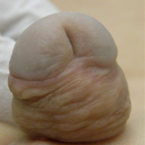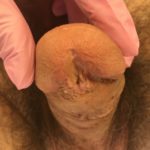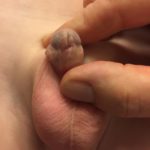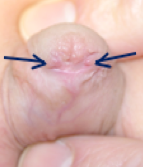
This post briefly introduces one of the common post-surgery complications, glans dehiscence.
What Is Glans Dehiscence (GD)?
Glans dehiscence is a known complication after hypospadias surgery, where the stitched head of the penis (glans) partially or completely comes apart. During surgery, the glans is closed around a newly created urine channel. If the closure doesn’t stay intact, the opening may shift back to a lower position. Pictures of GD are shown below.




What Are The Risk Factors?
Several factors can increase the chance of glans dehiscence:
- Location of the original urethral opening: If the opening is further down the shaft (proximal hypospadias) instead of near the tip (distal), the surgery is more complex, and the risk of the glans coming apart is higher.
- Redo surgery: If this is not the first surgery, the risk goes up. This is likely because the tissues are already scarred or not as healthy, making healing harder.
- Other factors mentioned in the research papers include glans width, urethral plate width, surgery before 6 months old or post-puberty, and so on.
How Common Is It?
The occurrence rate varies by study, but glans dehiscence happens in about 5% to 20% of cases. It’s one of the most common reasons children need a second surgery after hypospadias repair.
When Does It Occur?
Glans dehiscence usually becomes noticeable within a few weeks to a few months after surgery, often during follow-up visits or as the child grows.
Does It Always Need Treatment?
Not always.
- GD doesn’t always cause problems and might even improve urinary flow, so watchful waiting can be a valid option. Regular long-term follow-up is recommended, especially into puberty.
- Consider repair if the child experiences urinary problems (like a poor stream) or is upset about how it looks.
- It is important to be evaluated by at least one surgeon to make informative decision on the treatment.
References
- Glans dehiscence after severe hypospadias repair. Is it a real complication? Clues from a study in post-pubertal patients
- Glans dehiscence pictures examples source 1
- Glans dehiscence pictures examples source 2
- Risk factors of glans dehiscence by Snodgrass and Bush
- Risk factors of glans dehiscence by Karabulut and Sonmez
- Treatment decision from the paper on Salvaging the dehisced glans penis
